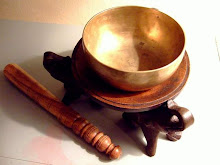
I didn't know much about Gustav Klimt until I started reading a miniature art book about him yesterday evening.
Today I finished the book, and I also read some websites about him. I found him to be a fascinating artist, and I wondered what I could learn from his experience.
He produced 220 pieces of art, as far as is known. Many of them were commissioned portraits of women, which is how he earned his keep. While he was a popular portraitist, on average he only completed one portrait per year.
He remained a bachelor all his life. Christopher Wynne wrote that Klimt’s burley physique, unkempt appearance, and brusque manner concealed his agile mind and sensitive nature. But 15 people came forward after his death, claiming to be his natural children, presumably from the numerous affairs he was rumored to have had, including with patrons and other women who had posed for him.
He pleased his clients in the early part of his career, but later painted only to his own standards. He started a new art group, the Secessionists, but later withdrew from it. He changed style several times during his lifetime. Controversy was no stranger to him. Three things inspired me from reading the accounts of his life, and from viewing his art.
First, he spent a good amount of time on each work of art he made. It had his total dedication when he drew and painted. Asked about himself, he told people that he did not have the gifts of speaking or writing, and that they should look carefully at his pictures and try and see in them what he was and what he wanted to do.
Visual art was his passion, and he gave it his time and attention. In contrast, the quality of my life seems colored by the quantity of tasks I have set out to do. I want to focus on less, give it more time, and put my heart totally into what I do.
Second, his art transcended what seemed like a strong duality in his life. On one hand, he was reserved and solitary throughout his life, single-mindedly engaged in his art, and he participated in society only when he chose to. On the other hand, he never seemed lost for the companionship of women and of nature. He enjoyed both intensely, to the extent that he could see them through different eyes than many other people.
And that is what he expressed in his art, with great passion, confidence, and precision. His example encourages me to delve deeper into my own two passions, writing and music, and to use them as media to express my own experience and vision of life. I will continue on that path.

Third, he adapted his art to his vision, changed style several times, yet never compromised on his own form. What a journey of discovery he went through. His early landscapes are totally different from the ones he painted at the end of his life. The style of his portraits also changed dramatically over time.
His themes and expression evolved, yet whatever style he used, he made it his own entirely. At all times, he was true to his own form. A part of my rebirth at 50 is the discovery of my own form and unique vision, and the need for commitment and discipline to stay true to myself on my journey.
Photograph: Gustav Klimt in 1902 (above), and his Woman with Fan (below), a finished painting found on an easel in his studio after his death in 1918.

No comments:
Post a Comment